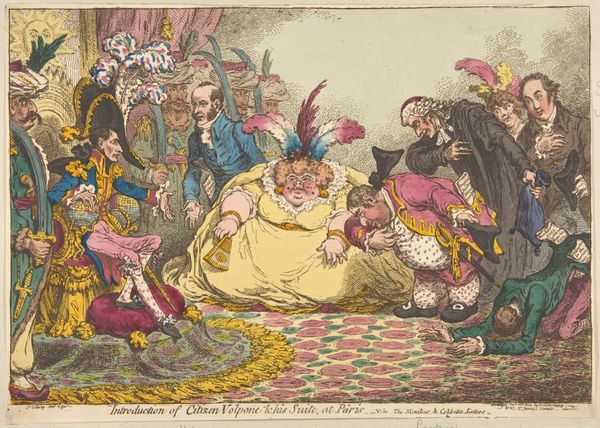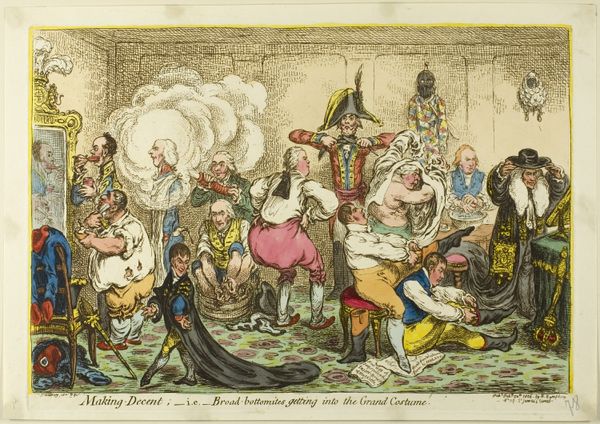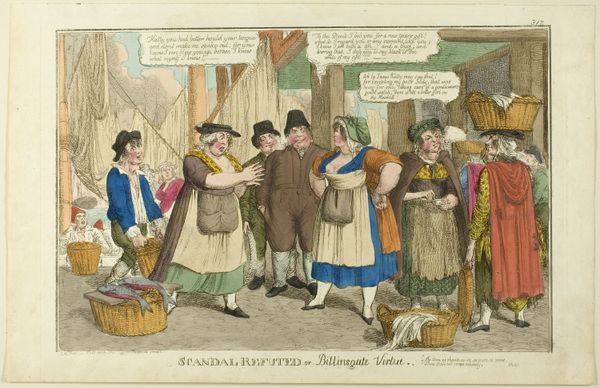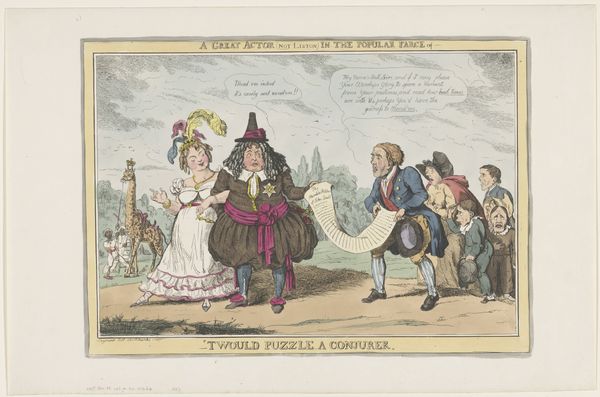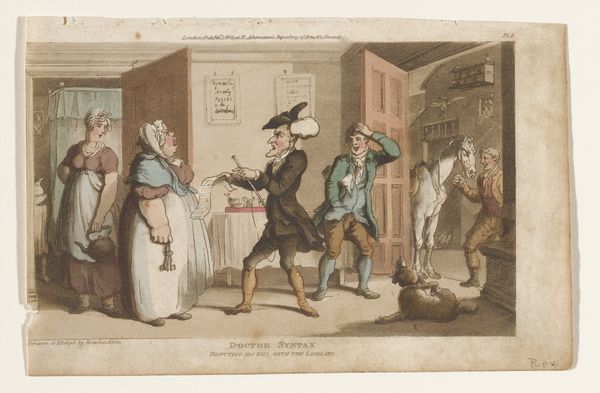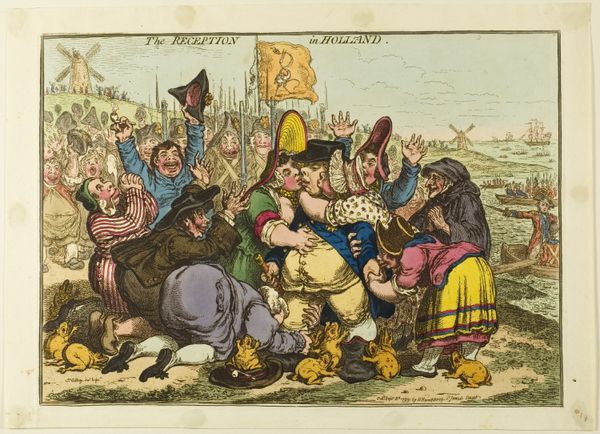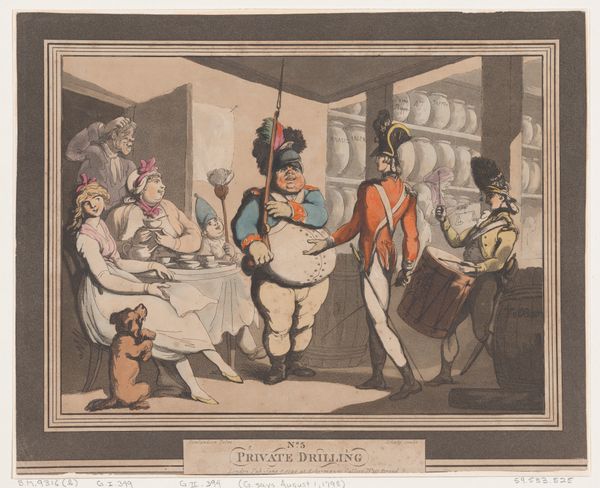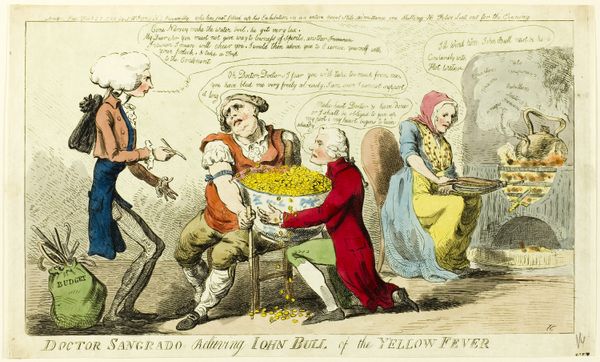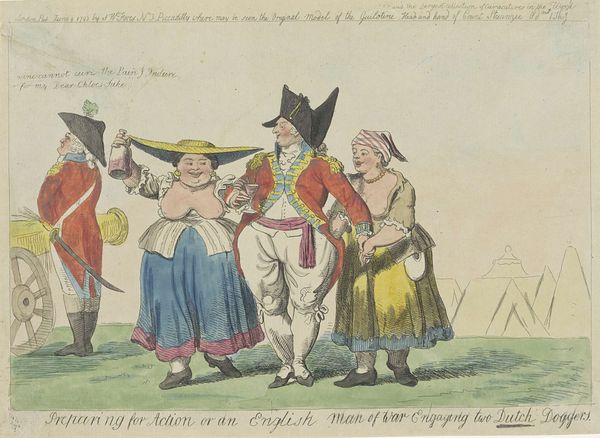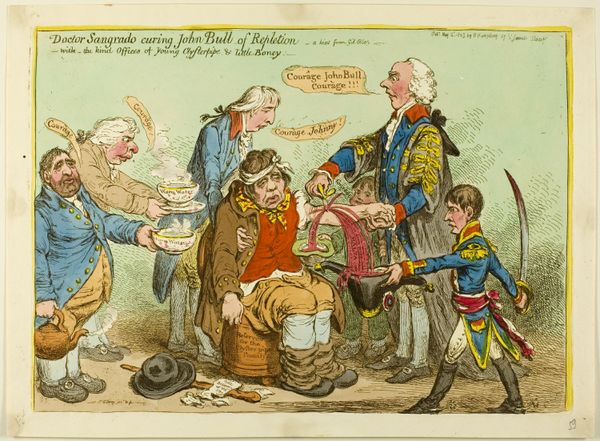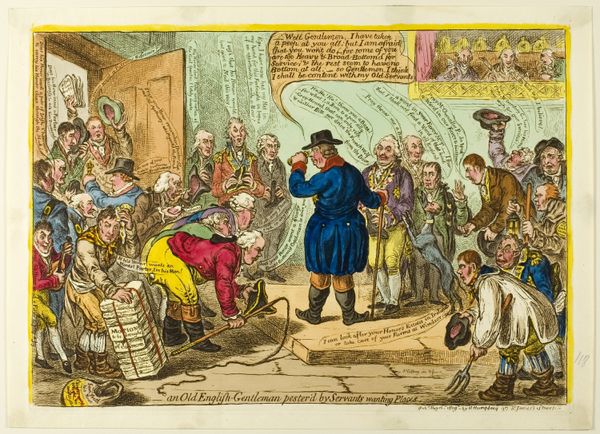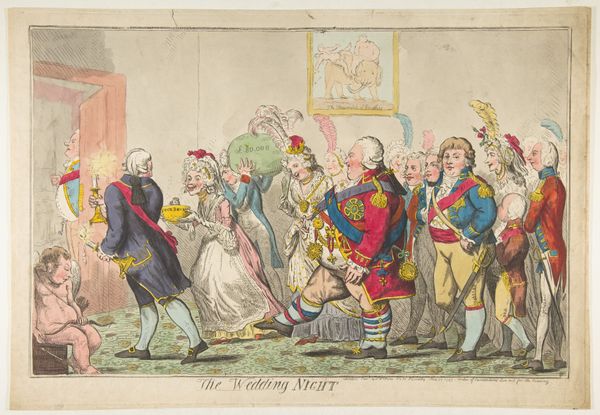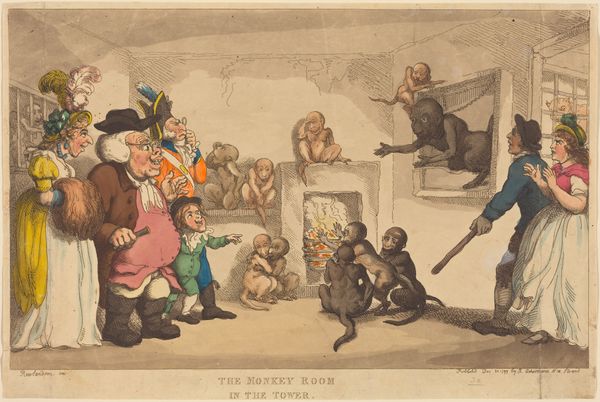
print, etching
#
narrative-art
# print
#
etching
#
caricature
#
figuration
#
romanticism
#
line
#
cityscape
#
genre-painting
Dimensions: height 261 mm, width 400 mm
Copyright: Rijks Museum: Open Domain
Curator: Thomas Rowlandson likely created this etching, "Hertog van Orléans tussen de visvrouwen", or "Duke of Orléans among the Fishwives," in 1789. It's held here at the Rijksmuseum. Editor: Well, it certainly throws a lot at you! There’s an overwhelming sense of clamorous energy, a raucous quality to the scene. It feels almost like something Breugel might have imagined, but filtered through a distinctly British lens. What a vibrant scene. Curator: Absolutely, Rowlandson was a master of social satire. He captured the mood around the French Revolution here, filtered through British perception, of course. The Duke's controversial attempt to buy popularity in Paris's marketplaces is brilliantly mocked, if you look closer. Editor: The faces, the textures! Look at how the fishwives are drawn - all ruddy, and robust and quite raw - particularly in comparison to the Duke. The materiality of their existence is front and center; it jumps off the page. Curator: Precisely! Consider this was during a time of huge socio-economic upheaval in France, and this print’s circulation likely added fuel to the existing political tensions in England. This image would speak to both class division, and fear of popular power getting out of control. Editor: And the fish! We shouldn't forget the actual material these women trade with. Silvery bodies tossed with such expressive carelessness into the lower corner—almost symbolic. The depiction and positioning of these fish seems critical. The economic role of working class woman is important to understanding Rowlandson's choices in making this image. Curator: Definitely. Rowlandson uses caricature to great effect, skewering the political elite, particularly the Duke's apparent insincerity in engaging with the working class. The whole piece embodies the political climate of the era; this single image illustrates tensions between aristocracy and the public sphere. Editor: I see it also as a snapshot of the processes of early printmaking. The strong lines etched into the plate, then inked and pressed... these labor intensive crafts are so fascinating in the industrializing world of the late 18th century! And then it goes into the public realm where it has political potential and capacity. Amazing. Curator: It’s fascinating how Rowlandson turned current events into such enduring art. I think his skill in visual storytelling has helped ensure his place in the cultural canon. Editor: I'll be thinking about the labor involved and about the power such printed material can provide and express in the social fabric. Thank you for that context.
Comments
No comments
Be the first to comment and join the conversation on the ultimate creative platform.
